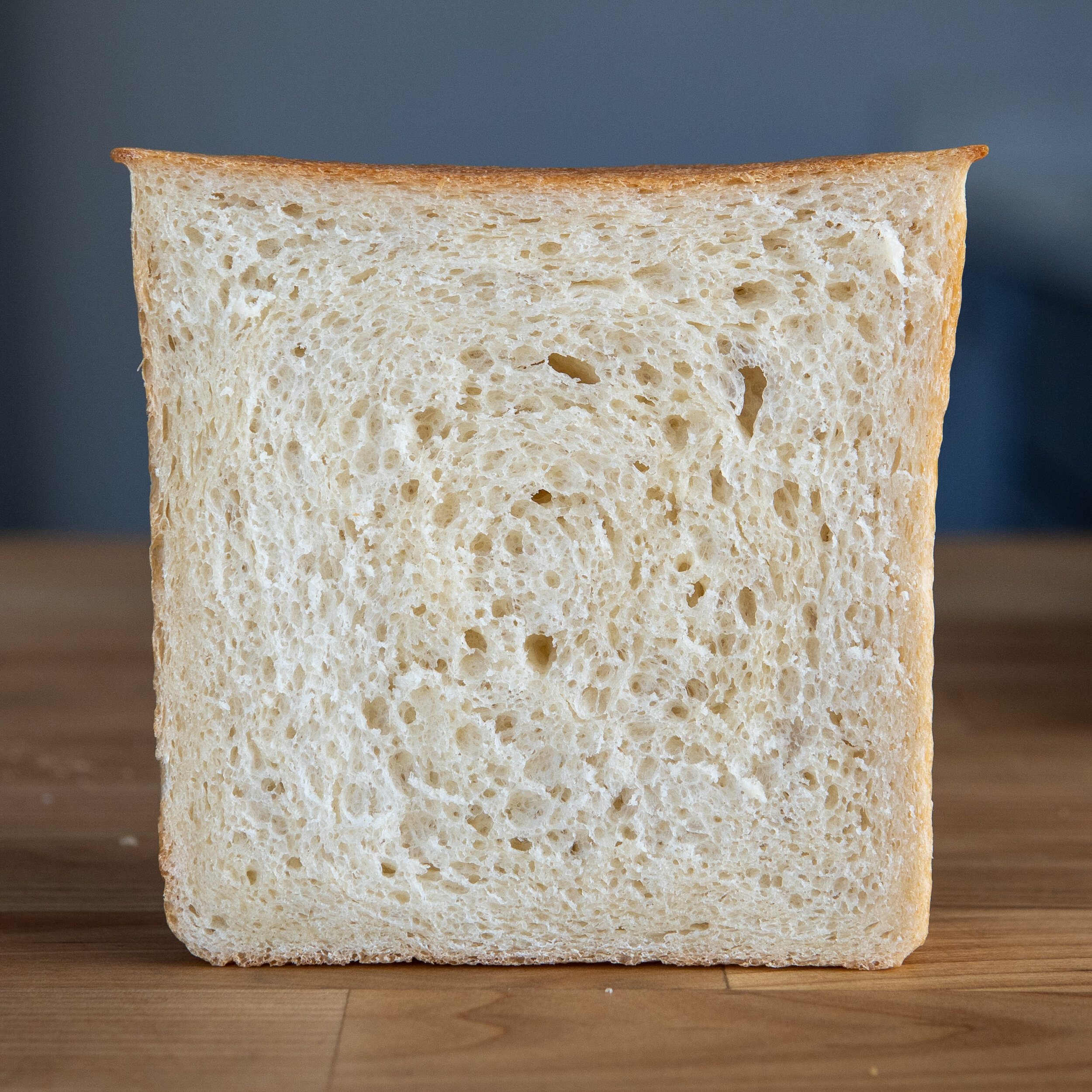Shokupan Loaf
Shokupan is a Japanese milk bread with a fluffy and soft interior. The bread uses an interesting technique called tangzhong, but what does it actually do? I put it to the test.
INGREDIENTS (For a large 13.5-inch Pullman loaf pan, measurements for a standard loaf pan below)
35 g flour (for tangzhong)
175 g water (for tangzhong)
175 g 1% milk (or whatever milk ya got)
9 g yeast (~1 packet)
565 g flour (preferably bread flour)
30 g sugar (or honey)
12 g salt
2 eggs
30 g butter, softened
METHOD
Make the tangzhong (if using)
Add the water to a skillet and whisk in the 35 g of flour. Set the pan over medium-low heat and stir the mixture until the roux thickens to a syrupy, pudding-like consistency. Turn off the heat. Set aside and let cool until 120 F or less (yeast begins to die off at temperatures above 120 F).
If not using, just mix the water with the milk, and add the 35 g of flour with the other flour.
Mix the dough
Heat the milk for 45 seconds in the microwave (roughly around 105 degrees F). Stir in the yeast and set aside.
Meanwhile, add the 565 g of flour, sugar, and salt to a large mixing bowl. Add the milk mixture, the cooled tangzhong, and crack in 2 eggs. Mix the dough with your hands until a cohesive mass has just started to form then cut in the softened butter. Mix for another 1-2 minutes, then let rest for 15 minutes to allow the dough to relax. Once rested, continue kneading in the bowl for another 10 or so minutes.
After kneading the dough, cut off a piece and test for gluten development by carefully stretching the dough very thin to check for a see-through 'window' before tearing.
Note: The gluten window test is the key to understanding if the flour has been hydrated enough which is how gluten is developed. If the dough tears before getting to a slightly translucent window continue kneading for another couple of minutes.
Bulk Ferment (1st Ferment)
Once done kneading, add the dough to the mixing bowl and cover with plastic wrap. Let rise until roughly doubled in size, about 60-90 minutes. It could take more or less time depending on the yeast, room/dough temperature.
Shape + Proof loaf (2nd ferment)
Once doubled in size, punch the dough down and turn out onto the counter. Work the dough into a large rectangle about the width of the pan and then tightly roll the loaf up. Pinch the seam at the bottom and place seam side down into a nonstick or greased 13.5-inch Pullman loaf pan. Cover lightly with plastic wrap and let rise for another 45 to 60 minutes until the dough has risen above the top edge of the loaf pan.
Note: If using the cover for a square loaf, place over the top before the bread has crested the edge of the pan.
Preheat the oven to 375 degrees Fahrenheit with 15-20 minutes left of proofing.
Egg wash (optional) + Bake
(Optional if not using a cover) Whisk an egg yolk with a splash of milk. Brush over the top of the proofed loaf.
Add the pan to the oven and set a timer for 30 minutes. The exterior of the bread should be golden brown. Test the interior with a cake tester or a thermometer to see if the interior has reached 200 F.
Slide the loaf onto a wire rack and let cool before slicing and enjoying.
Ingredients for a standard 4.5" x 8.5" loaf pan
20 g flour for tangzhong
100 g water (for tangzhong)
100 g 1% milk (or whatever milk ya got)
4 g yeast (1 packet)
330 g flour (preferably bread flour)
15 g sugar (or honey)
7 g salt
1 egg
15 g butter, softened
Shokupan crumb without tangzhong baked in standard size loaf pan.
Shokupan crumb with tangzhong baked in standard size loaf pan.



